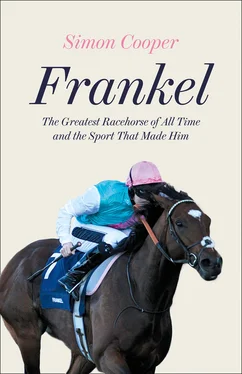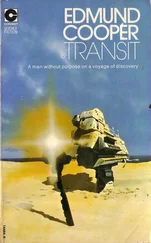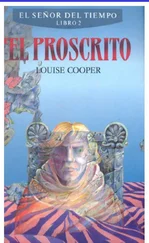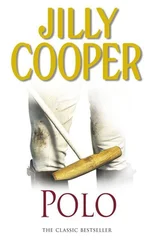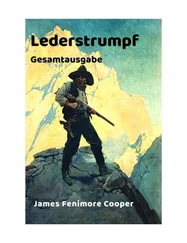But the change from no to yes is swift. One day, snarling dismissal. The next, acceptance. Instead of moving away from Padraig, Kind lets him nip and lick along her body starting at her neck, down her shoulders along her side and to her tail, his head constantly moving. Probing. His whole body aquiver at the sign of a receptive mare. She relaxes, leans towards him, straddling her legs, lifting her tail to allow him to sniff, and again lick and nip, at her genitals. For a mare that so often knows her own mind, Kind becomes placid. That is the final tell that her time has arrived.
However, before we follow the short journey Kind and Bullet Train took early on that Saturday morning to meet with Galileo in the covering barn, it is worth asking how exactly we have arrived at this point. In hindsight, the pairing looks both brilliant and obvious, but the who and the why deserve both credit and explanation. For the Frankel story started longer ago than you might imagine.
Prince Khalid bin Abdullah, a member of the Saudi Arabian Royal Family, first visited a racecourse just shy of his twentieth birthday in 1956. Though Longchamp in France was to become the scene of some of his greatest racing triumphs including the consecutive victories of the filly Enable in the Prix de l’Arc de Triomphe of 2017 and 2018, the day obviously didn’t spark any immediate passion, for it was not until the late 1970s that he began to buy racehorses. He was one of that group of Arabs who at that time, took the international racing scene across the UK, France and the United States by storm, upending the old order. Success came quickly. The Prince had his first winner of any kind in 1979 (at Windsor), and when Known Fact won the 2,000 Guineas at Newmarket the following year, he became the first Arab owner of an English Classic. Now you might say he bought success. He, and others, did indeed pay outrageous prices. But what choice did they have? They didn’t have the studs. They didn’t have the bloodlines. Prince Khalid set out to change that.
I could try to paraphrase the Prince’s thinking, but his words taken from an interview for the Racing Post in 2010 pretty well tell it all: ‘When I was at the [bloodstock] sales I realised that it would be easier to buy horses and race them, but I got the feeling that this was not enough, that it would be more fun to do what people like the Aga Khan and Lord Howard de Walden did and build up your own families.’
He chose the breeding above buying route early on, with his first home-bred winner coming in 1982. The properties soon followed, with horse farms in England, Ireland and the United States, all of which come under the Juddmonte Farms banner. He calls Juddmonte his ‘only hobby’, run for the pleasure of breeding and racing the thoroughbred horse rather than a business. I had no special access to the financial side of the operation during the writing of this book, but in my gut that chimes true. All the places of his that I visited that touched the life of Frankel – Banstead Manor Stud in Suffolk, New Abbey Stud and Ferrans in Ireland – felt like homes, a fact not just reflected in the places but in the people as well.
Henry Ford once said, ‘The harder I work the luckier I get.’ I think we can reasonably apply that epithet to the Juddmonte racing empire. They don’t shout their extraordinary success from the rooftops, so perhaps we don’t entirely realise their achievements. When the Prince mentioned the Aga Khan and Howard de Walden, he was referencing families who have been breeding racehorses for generations. He has achieved the same in three decades. And how? Well, it is very much by the Arab way of building up what has been described on occasion as, ‘one of the greatest broodmare bands in the history of breeding’. The results are amazing. By 1997, all the five English Classics had been won by home-bred horses. Prince Khalid has in numerous years before and since been the leading owner, mostly with horses he bred himself, in Britain and the United States. I won’t rattle off all the statistics, but you’d be right to assume it is impressive. So, this is the heritage of Kind, a second-generation Juddmonte mare. That is to say, Prince Khalid bought her grandfather Rainbow Quest and bred her mother Rainbow Lake.
The decision to mate Kind with Galileo was made by Prince Khalid the previous November prior to plotting out the covering programme. It is a big task, the aim being to plan on somewhere over 200 foals to be born in eighteen months’ time that will race in the Prince’s green, pink and white colours three years after that. You are truly planning for the future. Inevitably, with that number of mares to place, some decisions are more debated over than others. Kind, even though she was just a one-foal mare, was particularly well thought of, so merited extra consideration not least because she had what they call the nick.
Thoroughbred racehorse breeding is high-octane stuff. Not much is left to chance and such is the huge volume of statistical data from both breeding records and racecourse performances that every Juddmonte decision, certainly at this level, is based on quantifiable facts. Naturally, today the amount of information is huge, but that is not a strictly modern phenomenon: Kind’s family tree, and that of every thoroughbred, can be traced back with certainty to the seventeenth century thanks to the publication of the General Stud Book by James Weatherby in 1791 who set to record ‘the pedigree of every horse, mare etc. of any note, that has appeared on the turf for the last fifty years, and many of an earlier date …’ He was well placed to do this, as the Weatherby family were publishers of the Racing Calendar that had been recording all horse races and matches since 1727, something they continue to do today with the annual publication of both books.
It all looks so easy now, but when Prince Khalid, assisted by Juddmonte’s general manager, Philip Mitchell, sat down at Banstead Manor Stud, with background analysis done by pedigree experts Andrew Caulfield and Claire Curry, as the beech tree leaves started to curl brown with the first frost of autumn, Galileo was not the potent force we know him to be today. He was still up and coming. Likewise, Kind was unproven. Even little Bullet Train was still two years away from his racecourse debut. But the reasoning was not overcomplicated: Galileo was a proven middle-distance performer. That is to say, he was at his most effective between a mile and a quarter and a mile and a half. Kind, as a sprinter, could provide speed.
Prince Khalid and Philip had some other salient facts to draw on: Although Kind’s dam Rainbow Lake had plenty of stamina, Kind herself had sprinting speed through her father Danehill, whereas her half-brother Powerscourt demonstrated the middle distance class of the pedigree, having recently retired with a gilded reputation after winning his final race, the Arlington Million. (This was one of the leading turf contests in the US, so called as the first ever TB race to offer a purse of $1,000,000 when inaugurated in 1981.) And finally there was that nick.
I have to confess I had never come across the term the ‘nick’ until I began to research this book. If you do some googling, you will discover that vast amounts of cloud space are given over to this concept, as algorithms are deployed to drill down into every breeding permutation there has ever been to discover those that work best. It is a sort of genetic prospecting, trying to discover a new vein of equine gold. Summarised in a few words the nick is when the offspring of a particular stallion and the daughters of an unrelated stallion produce a higher than expected proportion of good performers. In our particular case, the two in question are Sadler’s Wells, Galileo’s father and Danehill, Kind’s father, with one such ‘nick’ being Powerscourt. Now not everyone is entirely signed up to the nick theory. Horse-breeding writers Matthew Binns and Tony Morris, who provided the summary you just read, are less convinced. They contend, without absolutely coming down on one side of the fence or another, that if you mate superior individuals the probability over time is that you will produce a higher than average number of superior offspring. But that is enough of the theory; what Kind and Galileo were about to do was put it into practice.
Читать дальше
